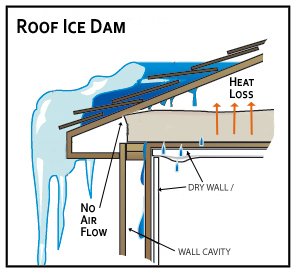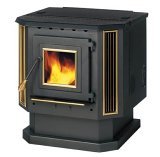
First Winter as a Maine Homeowner? Avoid the “Big 3” Headaches


Pellet stoves are hot. Over 50% of stoves bought in the U.S. in 2008 were pellet-fueled, according to the Pellet Fuels Institute.
 Any kind of wood-burning appliance causes concern for fire insurance companies. Insurers are often slow to adapt to new technology, since they rely on experience statistics to help them set rates and underwriting guidelines. However, most insurers understand the popularity of these stoves, and are trying to accomodate home owners who use them.
Any kind of wood-burning appliance causes concern for fire insurance companies. Insurers are often slow to adapt to new technology, since they rely on experience statistics to help them set rates and underwriting guidelines. However, most insurers understand the popularity of these stoves, and are trying to accomodate home owners who use them.
Operated and maintained properly, well-built stoves can be a safe, economical way to heat your home. If you buy one, your insurance company will probably ask some questions about it. Here are some of the insurance company guidelines we’ve seen.
5 Keys to Making Your Pellet Stove Insurable
It’s always smart to ask your agent or insurance company before installing a wood-burning appliance. If you have any questions, contact Noyes Hall & Allen Insurance .
Halloween is a lot of fun, especially for children. It is also one of the most dangerous nights of the year. Here are 7 tips to make sure the scares remain all in fun.

For Trick or Treaters
At Home
On The Road
Beginning November 1, 2009, a new Maine law requires smoke detectors and carbon monoxide detectors in every rental property, and in any residence purchased after that date.
As always, insurance companies will allow Homeowners insurance discounts for smoke detectors and other protective devices.
Detectors Required
- Must be 120V with battery backup and powered by the building’s electrical system.
- Plug in units are acceptable, as long as they have a battery backup.
- Detectors must be in each unit, near bedrooms for apartments or rental homes – even seasonal or occasional rentals.
- Must be photo-electric type if located within 20′ of a kitchen or bathroom.
Buying a Home?
Buyers (not sellers) must certify that these detectors are in the property in order to close on a purchase & sale agreement. The Maine Dept. of Public Safety is drafting a certification form which will be used for this purpose.
For more information:
Maybe it’s all the rain and snow we’ve had this year. Maybe it’s the economy . Maybe it’s the increase in ads for plaintiff attorneys. Whatever the cause, it seems we’ve seen an increase in slip-and-fall liability claims lately.
Our agency would normally see one or two slip-and-fall accidents in a 6-month period. This year, we’ve seen almost that many every month. On stairs and in parking lots, in retail stores and private homes, southern Mainers seem to be having trouble keeping their balance.
It’s possible that today’s higher unemployment rates have left fewer people with medical insurance available to pay for their emergency room visits and doctors’ treatments. With last winter’s heavy snow and this spring’s constant rain, surfaces have been especially slippery. Combine those factors with the power of suggestive advertising by plaintiff attorneys telling the public that “someone has GOT to pay”, and it may be logical that we have seen more slip-and-fall claims.
What can you do to protect your guests, yourself and your assets?
For more information, call Noyes Hall & Allen Insurance.
The Maine Department of Transportation recently issued a reminder to motorists to watch for moose on the road. Out-of-state visitors often chuckle when they see “moose crossing” signs, but colliding with a moose is no laughing matter.
Maine averages more than 600 crashes a year between moose and vehicles, killing 22 drivers over the past decade. Nearly 90% of crashes occur between dusk and dawn, with about 80% in darkness.
Moose are dark brown, and therefore difficult to see at night. They are so tall that their eyes do not reflect oncoming headlights. They tend to move in groups; if you see one, they may well be another. Because of their height, the animal is often thrown into the windshield when struck, causing injury and significant vehicle damage.
While many Mainers know that deeer are on the move during November breeding season, many don’t know that moose are more active during their summer mating season.
The DOT has produced a helpful brochure with safety hints, offering advice ranging from driving safely in known moose-crossing areas (operating “within your headlights”) to what to do if you see a moose in the roadway (stay in your vehicle, and don’t try to drive around it), to what to do if a crash is unavoidable (let up on the brakes just before impact).
Southern Maine drivers, especially in urban and suburban areas, tend to think that they’re out of the danger zone. But moose collisions have occurred in heavily populated neighborhoods in Portland, Lewiston-Auburn and Bangor.
Buckle up, slow down, drive carefully and live!
An article in today’s Sunday Telegram cites evidence that home burglaries are on the rise in Cumberland County. The county Sheriff’s Department says they investigated 54 burglaries from December to February, double that of last year.
While we haven’t yet seen an increase in burglary claims this year, it’s always a good idea to be vigilant and to take measures to keep your home safe.
Here are some suggestions from the Cumberland County Sheriff’s Office.
The Sheriff’s Department also offers these hints if you’re planning to be away from home for an extended period:
If you had to guess what kind of vehicle is most likely to tickets, what would you choose? A flashy sports car like Ford’s Mustang or the Porsche 911? A “pocket rocket” like the VW GTI that attracts a younger buyer? Guess again.
According to ISO’s Quality Planning Corporation‘ s recent study, The Hummer H2/H3 actually leads the pack. Why? That’s the subject of great debate. Is it that Hummers attract a buyer who’s independent and “type A”? Does the stance of the vehicle itself change the way drivers interact with traffic and roads? Who knows. But Hummers are over 450% more likely to be ticketed than the average vehicle.
Rounding out the top 10 are three Scion models, the Toyota Solara and Matrix, all of which appeal primarily to younger drivers, and a couple of the higher powered Mercedes models. Another surprise is the Subaru Outback Station Wagon, over 2.5 times more likely to be ticketed than the average vehicle.
So which vehicles are the least likely to be ticketed? Well, some are not surprising: three Buicks and an Olds make the bottom 10. Interestingly, some other SUVs and a few pickups make the “least ticketed” list: Chevy’s Suburban, Tahoe and CK pickup, and the GMC Sierra. Each of these is less than half as likely to get a ticket as the average vehicle. The absolute least likely: another surprise – theJaguar XJ sedan.
The study compared a vehicle’s violation count per 100,000 miles driven for a one year period from 2007 to 2008.
Many people fail to purchase flood insurance when they buy a property. Some believe that their Maine homeowners insurance will cover flood damage. It won’t. Others think that because their lender hasn’t required them to buy flood insurance, they’re not in a “flood zone“.
Every Property Can Sustain Flood Damage
Some properties are more flood-prone than others, of course. Ocean- or river-front property is more likely to flood than homes located on higher ground. The good news is that it’s relatively inexpensive to buy flood insurance if you live in a low risk area.
What is a Flood?
The word “flood” conjures up images of rising rivers and streams, or ocean storm surges. Those are floods of course, but so are: snowmelt runoff; dam breaches; heavy rains; and flash floods. All of those things can and do occur in Maine. Here’s a list of past flood disasters in Maine, which doesn’t include some notable recent events.
Remember the heavy rains of August, 2008 that flooded several southern Maine areas? Many property owners in the affected areas had never experienced flooding before.
Mandatory 30 Day Waiting Period
Let’s say you’ve heard weather forecasts of heavy runoff from snowmelt. Concerned about your property, you call to buy flood insurance to protect your home. The government knows that many people who would buy such coverage may be in imminent danger. That’s why they require a 30 day waiting period for coverage to take effect – unless you’re buying property and coverage is required by your lender.
That means now is the time to think about buying flood coverage – not when the river’s rising.
Flood insurance is only available through the National Flood Insurance Program, a government program managed by FEMA, and available through virtually any Maine insurance agency. Contact Noyes Hall & Allen Insurance for a quote. For more myths and facts about flood insurance, download this brochure.
Maine’s DEP recently issued a statement warning homeowners who have outside oil tanks to take steps to prevent leaks. During a recent Channel 6 news piece, Peter Blanchard from the Maine DEP explained that snow and ice dropping from the roof can cause the nipple to break between the oil filter and the tank.
Approximately 80% of Mainers heat their homes with oil. It is unknown how many of these oil tanks are outdoors. The DEP recommends installing a shield over the filter to protect it from damage. They’ve even produced a video about it. This is more than a good idea; homeowners with outside oil tanks are required by code to have a protective shield.
Blanchard points out that his department responds to almost 500 oil spills every year. Cleanup costs can run from $10,000 to over $100,000. By contrast, oil tank covers cost about $75.00.
What if the worst happens? Does your homeowners policy cover you? Our agency has not had such a claim, so we don’t have any “real world” experience to report. However, most homeowners policies exclude pollution damage unless it’s caused by one of 16 named perils. “Weight of ice and snow” is only a covered peril for property located INSIDE a building. That doesn’t sound promising. “Falling objects” is another covered peril. Would an insurance company consider snow dropping from a roof to be a “falling object”? Who knows for sure. The New York Insurance Department is equally unsure. So, we agree with the DEP’s advice: $75.00 worth of prevention is worth $100,000 of cure.
For more information, call the DEP at 1-800-482-0777.